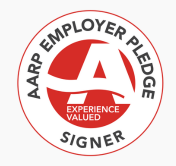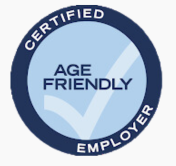For Women’s History Month, we honor Claudia Goldin for her Nobel-prize-winning work on women in the labor force. Her study could not have come at a better time, as employers grapple with the tension between back-to-office policies and flexible work. The findings in Goldin’s study underpin a strong business case for why retaining a flexible workplace is critical: Employers without a flexible workplace will be significantly disadvantaged in accessing an increasingly critical talent segment – WOMEN
Goldin Reveals a Persistent Barrier
In her groundbreaking studies, Goldin reveals that while we’ve made progress as a country in breaking down barriers for women to achieve equal pay and equal standing in their work compared to men, a persistent barrier remains: the interruptions and disruptions in a woman’s career driven largely by caregiving responsibilities. Goldin’s research shows us that over the past two centuries, we’ve opened access to education for women, broadened women’s occupational choices, and chipped away at stigmas and social norms that drive gender-based career paths. But we have not done enough to forge ways for women, who still shoulder a disproportionate share of caregiving, to stay in the workforce while juggling the demands of parenting or eldercare. While not a singular solution, flexible work options that allow remote work, schedule flexibility, reduced hours during certain periods of a career, or opportunities to effectively return from a career break, are powerful in minimizing career disruptions.
Companies Can’t Afford to Overlook the Most Educated, Ambitious Segment of the Workforce
More than ever, employers need women to stay and progress in the workforce. Women make up almost 60% of college graduates, as men’s share slips. Women’s labor force participation (for prime-working-age women ages 25-54) hit a record of 77.8% post-pandemic and is rivaling men’s, as men’s participation slides. The labor market is tightening with baby boomers retiring, our birth rates declining, and immigration insufficient to close the gap. Companies can’t afford to overlook any segment of the workforce, especially the most educated, ambitious generation of women in our country’s history.
Employers who understand and position themselves to weather and even capitalize on these demographic shifts will win. Many of our clients are extending the flexible workplace policies they were forced to deploy during the pandemic. They are using flexibility as a competitive advantage in retaining and recruiting women. We’ve worked with many clients to cherry-pick top female talent from other less flexible companies.
A Confluence of Forces is Urging Us to Normalize Flexibility
We didn’t have Claudia Goldin’s insights when we started our business fourteen years ago. We just knew in our gut that there was a structural problem in the workplace that was pushing highly accomplished women to the sidelines. We’re at an inflection point now in our country with a confluence of forces urging us to normalize flexibility: a tight labor market expected to grow tighter over the next two decades, the rising importance of women in the workforce, a new corporate mindset and capability to implement flexibility, and a better understanding, through Goldin’s work, of how to break down one of the last remaining barriers to women’s pay equality. We’re excited about our role in this movement and the opportunity to work with our clients to continue to position themselves for the future by creating workplaces that embrace and empower employees, regardless of gender.
Are you interested in leveraging flexibility as a competitive advantage? Reach out to us to see how we can collaborate on your next hire.









